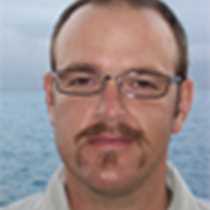Santiago Island
We are greeted this morning by a clear sky and a bright sun shining over Santiago Island and Espumilla Beach. Our landing site this morning is one of the largest nesting areas for Pacific Green sea turtles and we find some tracks from the previous evening. Large mangroves protect this beach from erosion and we weave among the large trunks as we head inland. A juvenile Galapagos hawk lands very close, keeping an eye on this curious group of humans, possibly sizing us up as a meal for our top land predator. Large Palo Santo incense trees enclose the trail as we gain some altitude and have a view of our anchorage. Kayakers are seen in the distance as they explore along the coast. Mockingbirds and Galapagos flycatcher’s crisscross the trail as they chatter and search for their morning subsistence. We gain a view of the coastline and are able to observe the area that interested Darwin when he landed here in 1835.
As we return to our ship the captain is raising the anchor and we reposition close to Buccaneers Cove. This cove was once used by sailors as they would careen their ships and repair the hulls, eventually refloating the ships as the tide would come in. Snorkelers find large mobulae rays and an abundance of fish species along a cliff area. Zodiac riders find a rich geologic history with tuff cones and layers of ash and volcanic bombs littering the coast. Large opuntia prickly pear cacti cover the rock formations up to the edge of the precipices. As we all return to the National Geographic Islander we are astonished once again at the diversity of life and terrain as we explore this new site.
A short navigation brings us slightly farther south to Puerto Egas and we find some of the settlement that was left behind in the 1960’s. This area was used for a salt mining operation that lasted up until 1960. A cinder block structure and water tanks are what was left here to remind of us the human history of the sight. The black beach which we land on is warm under our feet and we notice a group of sea lion pups awaiting their mothers. Along the coast we find an interesting layer of compacted ash sandwiched between the lava flows that entered into the ocean. Oyster catchers and great blue herons look for their prey and we come upon “piles” of marine iguanas that are warming up in the last rays of the sun. A large bull sea lion makes his distinct bark in the distance announcing his presence. As we come to the end of the coastal trail we encounter suspended basalt bridges that were left here as the roofs collapsed in on various lava tubes. These “grottos” are a favorite site for the Galapagos fur seal which we come across resting on the ledges and awaiting the early evening so they may head out to feed. A sea turtle ventures into one of the grottos as the sun drops and we finish another day of exploration and contemplation of this natural wonder that is Galapagos.




